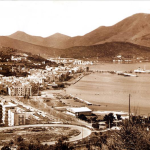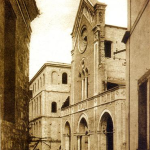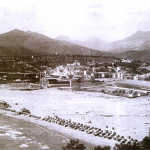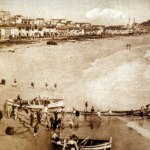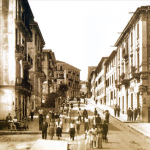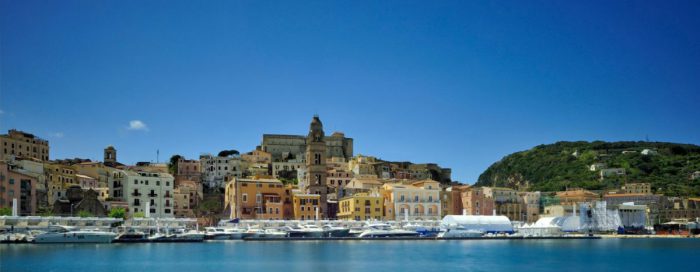History of Gaeta, part one
Cajeta, between sea and legend
Then Enea to the ships hurries and his sees again. Then, running along, his course turns to the port of Gaeta and throws the anchor: stop on the beach lay the ships… (Eneide, libro VI, 1300-1304)
Gaeta is a small town located south of Lazio, and overlooks a Gulf that takes its name from it.
Caieta is the original name that Virgil attributed to it in a passage of the Aeneid (VII, 1-4). The poet made you die “Cajeta“, the nurse of Aeneas, buried by the Trojan hero on that site during his journey to the Lazio coasts. Dante, almost to signify the historicity of the Virgilian poem, confirmed the event in a Canto (Inferno, XXVI).
According to the geographer Strabo, the name derives from the Doric voice “Kaietas“, a term used by the Phoenician and Greek navigators to indicate the wide bay of the Gulf.
Diodorus Siculus linked these lands to the myth of the Argonauts by deriving the name of the city from “Aietes” (mythical father of Medea, daughter of Circe, the sorceress in love with Jason).
In the Roman age Gaeta it became a well-known holiday destination for various emperors and, as Cicerone noted, a port of considerable importance.
Since the last century of the republic, on the surrounding hills, along the beach of the bay of Gaeta, and on the whole coast towards Sperlonga, great villas with gardens and pools, nymphaeums, temples and mausoleums of which still remain impressive testimonies. An example is the tombs of the consuls Lucio Munazio Planco and Lucio Sempronio Atratino.
With the decadence of the Western Roman Empire, a dark period of transition begins, characterized by continuous looting by the first barbarian populations and then by the Saracens.
In the Middle Ages, due to its natural position (a singular high and rocky peninsula), easily defended, Gaeta became a stronghold, a castrum, constituting itself in the first half of the ninth century in autonomous and flourishing duchy, as well as bishop, initiating an intense maritime trade in the Mediterranean.
In 1032, year of the sunset of the Duchy of Gaeta </ strong> (which lasted about two centuries) and with the definitive conquest of the Kingdom of Naples by the Spaniards, various dominations succeeded (Norman, Swabian, Angevin, Durazzesca, Aragonese), which make Gaeta the second capital of the kingdom.
In this same period, Gaeta became, not infrequently, the basis for the conquest of Naples (Ladislao di Durazzo in 1399, Alfonso d’Aragona in 1442).


